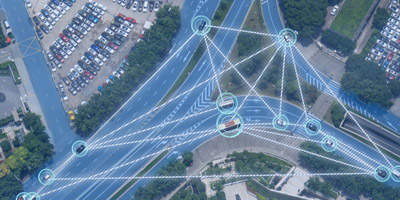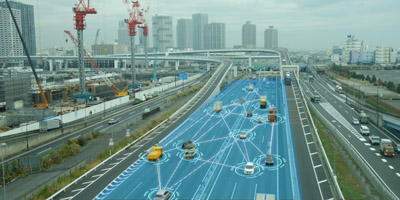 When people think of traffic and Covid19, they recall the eerily empty streets from the pandemic's early period. In the longer term, Covid has actually increased traffic throughout the nation, as health fears pushed people into cars and away from public transit. According to the Department of Transportation, there has been an 18.4% increase in traffic fatalities since the first half of 2020. These are scary numbers, but there are tools available to municipalities that can help get our roadways back on track. In this blog, we'll take a look at one exciting method for improving road safety and efficiency: machine vision.
When people think of traffic and Covid19, they recall the eerily empty streets from the pandemic's early period. In the longer term, Covid has actually increased traffic throughout the nation, as health fears pushed people into cars and away from public transit. According to the Department of Transportation, there has been an 18.4% increase in traffic fatalities since the first half of 2020. These are scary numbers, but there are tools available to municipalities that can help get our roadways back on track. In this blog, we'll take a look at one exciting method for improving road safety and efficiency: machine vision.
Machine vision describes machine-learning-enabled vision systems to automate the perception and recognition of images for machines. It involves cameras that can see all that humans can and more, whose data is then fed through machine learning-based algorithms in order to classify the data captured in these images by comparing them against massive libraries of data. This allows the operator to automate the act of capturing images and, if appropriate, put other systems in place to respond to the images being captured.
There are two sides to the uses that machine vision can be put to when installed in a municipal traffic system, one proactive and one reactive. The reactive side is one that we're all probably familiar with—using machine vision-enabled cameras to perform speed checks, capturing images of cars that are going too fast, or otherwise disobeying local traffic laws. The second possibility is more exciting: machine-vision-enabled cameras can gather large amounts of visual imagery—given that they are usually left on 24/7—which can then be analyzed by traffic planners in order to optimize the roadway for speed and safety. While much has been made of the reactive side of things, as it's easier to understand how a camera issues you a ticket, it is the proactive and long-term use of these systems that should excite anyone who shares the road.
 However, even as this technology is coming into its own, there remain issues that engineers are working tirelessly to solve. Chief among them: is how you get the data from these cameras to the cloud in the first place. These cameras capture too much information for them to be connected to a central database, so system designers today use a combination of edge computing—or sending the information to local, smaller servers closer to the cameras physically than the hub—and cloud computing, which allows the bulk of the processing to be handled in the cloud on servers elsewhere. While this part of our blog may seem theoretical, it also goes to show how machine vision-enabled traffic systems are more common than ever before and promise to only become more common going forward, especially with the introduction of high-speed networks such as 5G, which can help with the bottlenecking data issue.
However, even as this technology is coming into its own, there remain issues that engineers are working tirelessly to solve. Chief among them: is how you get the data from these cameras to the cloud in the first place. These cameras capture too much information for them to be connected to a central database, so system designers today use a combination of edge computing—or sending the information to local, smaller servers closer to the cameras physically than the hub—and cloud computing, which allows the bulk of the processing to be handled in the cloud on servers elsewhere. While this part of our blog may seem theoretical, it also goes to show how machine vision-enabled traffic systems are more common than ever before and promise to only become more common going forward, especially with the introduction of high-speed networks such as 5G, which can help with the bottlenecking data issue.
If you'd like to learn more about the kinds of cameras that your municipality or organization can use as you think about setting up a machine-vision-enabled traffic system, visit Phase 1 Technologies' product list today!
